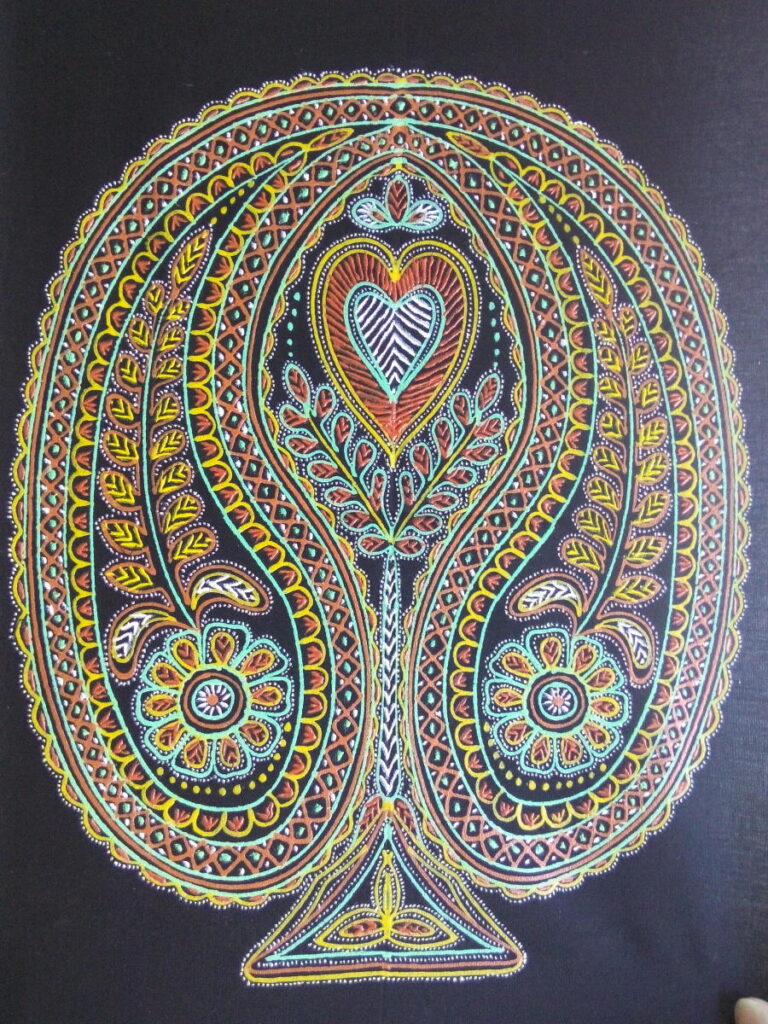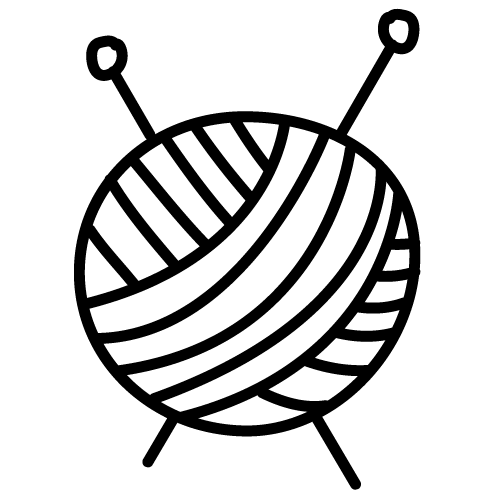Everything you need to know about the ancient art form of
Rogan Art.
What is Rogan artform?
Rogan Art is a Persian term, which means varnish or oil.
Rogan art form is an art of fabric printing practised in the Kutch District based in the Indian state named Gujarat.
In this art, painting is created using the heated oil and the vegetable colours which are set down on texture utilizing either a metal square or a pointer.
The art almost declined in the late twentieth century, with Rogan art being practised by just two families of the Kutch District.
The procedure
Rogan is the procedure of painting on cloth, made from a thick bright-hued paint-like substance created with the use of castor seed oil.
Castor is a neighbourhood crop developed in Kachchh which artists utilized to initially source from farmers located nearby.
Craftsmen place a little portion of this paint paste into their palm.
The paint paste is at room temperature.
The paint is deliberately twisted into themes and designs utilizing a metal rod.
This metal rod never interacts with the design.
A while later, the craftsman overlays the texture, subsequently printing its identical representation and making an asymmetric pattern.
Essentially, it is an elementary type of printing, however, the patterns are extremely complex.
Anciently, the patterns used to be more natural but as time passed this art has developed and turned out to be more attractive, complex and fine.
Why did the art decline?
Rogan art was at first practised in different areas of the Kutch district.
The painted cloth was generally bought by women belonging to the lower sections of the society as they wished to decorate clothing and bed covers for their marriage.
Therefore, it was occasional craftsmanship, with the greater part of the work occurring only during specific months of the year when most weddings happen.
While the rest of the months, the craftsmen would change to different types of occupation, for example, agriculture.
As cheaper machine-made materials grew in the late twentieth century, Rogan art items turned out to be moderately more costly, and various craftsmen opted for different types of work.
Eventually, just a single family, the Khatris of Nirona, Gujarat, practised this art.
How was the art restored?
In the late twentieth and early twenty oneth century, various elements met up to achieve a restored enthusiasm for Rogan craftsmanship, particularly painting.
To start with, post-2001 Gujarat earthquake, when a huge part of the area was destroyed, the water and power infrastructure was enhanced, new streets were created, and the flights into the locale was inclined, all of this prompted a rise in the travel industry.
Second, regional cooperatives, as well as non-benefit groups, aided regional craftsmen, comprising Rogan craftsmen, to expand their market by selling in urban areas as well as on the web.
Third, numerous people from the Khatri family won state as well as national awards for their artwork, consequently expanded the glory of their work.
Prime Minister Narendra Modi went to the United States in 2014.
He gave President Barack Obama two Rogan canvases incorporating a tree of life.
They were composed by Abdul Gafur who has also won a national award.
Gafoorbhai Khatri is the head of the Khatri family.
He has tried his level best to keep the craft alive by making sure that his whole family masters and practices it (pretty much every craftsman belonging to the family won a national award).
He owns a visitor’s book occupied with testimonials from the legends.
They belonged to Japan, United States, Spain and Australia.
In Nirona, the Khatris offered more contemporary items with a request to the travellers, for example, bags, cushion spreads, table spreads, wall hanging, and pillow spreads.
The tree of life kept on being a significant theme.
The number of travellers to the Khatri workshop expanded consistently during the 2010s more than 400 each day, causing gridlocks in the town.
While trying to stay aware of the expanded interest, in 2010 the Khatris started to prepare ladies.
Anciently, it was expected that women would circulate the secret of the art when they married. In 2015, twenty ladies were working with the Khatri family in Nirona.
Has the government taken any initiative to promote art?
The government provides incentives to Rogan craftsmen with an intention of promoting the Rogan artwork.
Numerous new companies and NGOs are assisting with making a business opportunity for them.
Other than protecting customary designs, the craftsmen are being urged to try different things with new themes and shading blends.
This will produce items that have a different approach, are pocket friendly and have a more extensive reach.
For quite a while, this exceptional art was not notable even in India.
Yet, as there was an incline in the fans incorporating Amitabh Bachchan, Waheeda Rehman, Shabana Azmi and, Prime Minister Narendra Modi, Rogan craftsmanship is presently getting the acknowledgement it is entitled to.
Did we miss something?
Let us know in the comments down below!











